Interconnected Mountains and Seas
On the Seto Inland Sea in Hiroshima, oyster cultivation leads to plastic waste in the ocean. A new project aims to solve that problem with mountain bamboo. We also learn how nutrients flowing from the mountains help to create abundant seas, and how maintaining forests and seas forms a virtuous cycle that helps both.
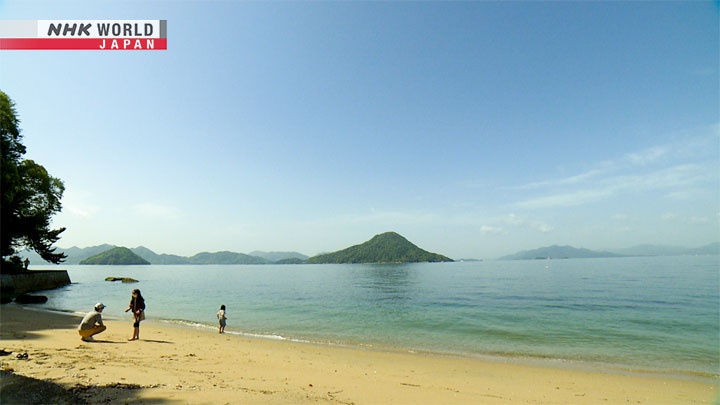
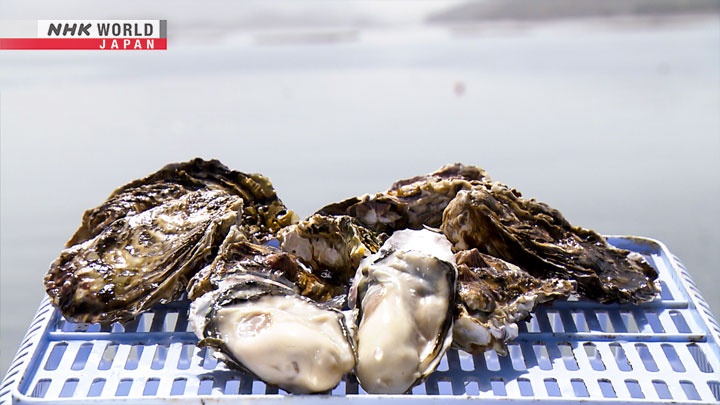
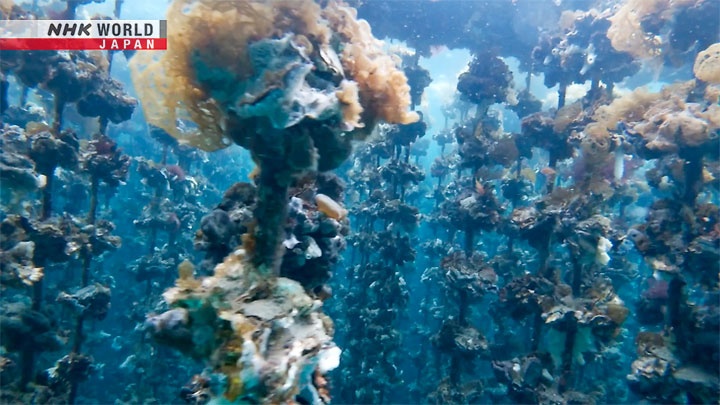
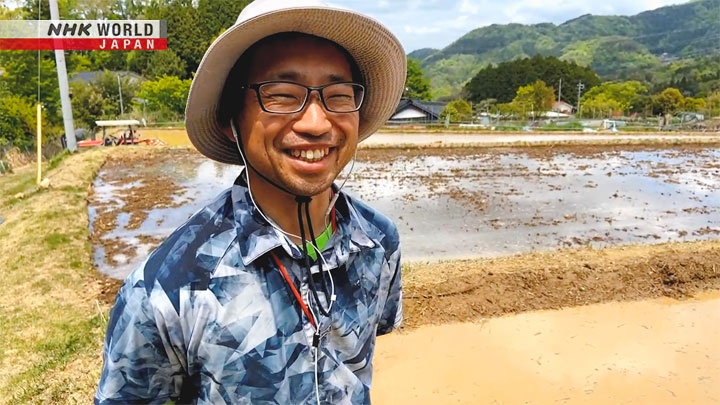
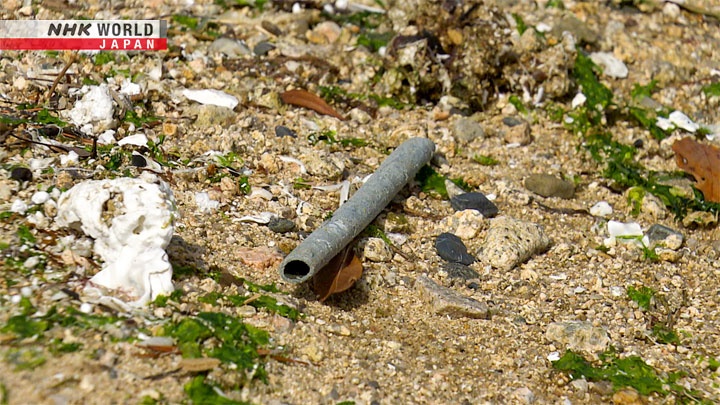
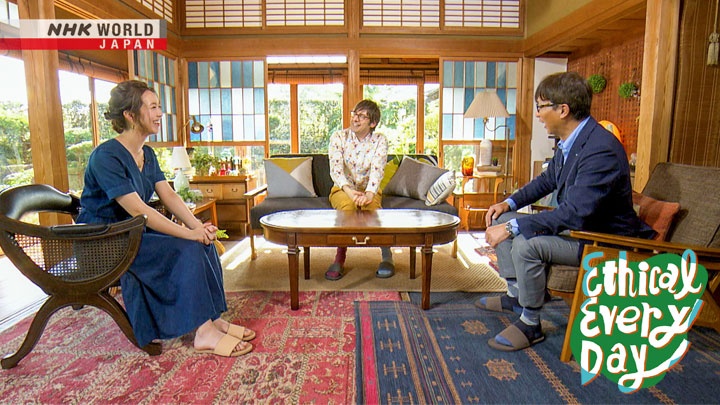
Transcript
The idyllic Seto Inland Sea, seen from a beach in Hiroshima.
Found some trash!
What's this?
Found on the beach is some unusual pipe-shaped waste.
Ship parts or something?
There are so many.
These pipes are actually used to cultivate oysters, a Hiroshima delicacy.
This seaborne plastic waste is causing problems in Hiroshima and its surrounding seas.
However, various projects are underway in the mountains to help return the seas' vitality.
But what do the mountains have to do with the sea?
Today on Ethical Every Day: the connection between mountain and ocean on the Seto Inland Sea.
Hello, everyone.
This is Alisa Evans.
On Ethical Every Day, we discuss ways we all can minimize our impact on the global environment,
and create a healthier and sustainable society.
Hi, and I'm Matthew Chozick, very ethical and always looking forward to learning more about sustainable lifestyles.
Right.
Have you been to Hiroshima before, Matthew?
I have, in fact, several times.
Did you like it?
I loved it.
There's this gorgeous island covered in bunnies.
Really?
Yeah. And of course, there are very famous oysters.
That's right.
Actually, Hiroshima produces the most oysters in Japan.
Really?
Yes. They are cultivated using pipes like these.
Have you seen them before?
- Can I see?
- Yeah, of course.
Is this plastic?
Yes, it's actually made with plastic.
And they become ocean waste, which is a problem for the environment.
Aside from washing up on shore, they may get eaten by fish.
Yeah, that's right...
Thankfully, there is a project that aims to solve this plastic problem using natural resources.
Let's take a look.
Hiroshima is Japan's largest oyster cultivator.
This is a cultivation site.
How are those plastic pipes used?
Let's take a look underwater.
Oysters grow hung on these long wires, placed at equal intervals.
The pipes are set between each oyster so that they don't bump up against each other,
and so each gets plenty of nutrients.
Once they've grown big enough, they're hoisted by crane.
The bottom of the wire is cut, and the oysters and pipes topple down together.
About 230 million of these pipes are used in the seas of Hiroshima.
Cheap and durable, plastic pipes have been used in this work since around 1960.
After use, they're washed and reused over and over.
But pipes that accidentally flow into the sea become waste that doesn't break down.
It's said some two million pipes become waste each year.
There's a risk that when damaged, they can also release microplastic waste.
There's a project underway to solve this problem with a natural material.
That project is taking place not by the sea, but in the mountains.
This is a bamboo forest.
Bamboo grows in temperate climes, and is especially prevalent in western Japan.
Bamboo shoots, which appear in spring, have long been a beloved local delicacy.
The bamboo shoots here are famous
for being soft and delicious.
This is Tanigawa Hiroyuki, who works to conserve bamboo forests in northern Hiroshima Prefecture.
He wants to return things to a time when people lived in harmony with these beautiful bamboo forests.
The mountains here are experiencing depopulation, so forest maintenance has fallen behind.
Bamboo reproduces quickly, preventing other trees from growing.
Because bamboo doesn't grow roots as deep as other trees, the mountains' ability to retain water drops.
That means a danger of landslides during heavy rains.
9 years ago, Hiroshima had a
landslide disaster.
Many people lost their homes
and their lives.
The mountains had lost
their ability to retain water.
That's why we started
maintaining the bamboo forests.
Tanigawa believes bamboo can also help solve the plastic pipe waste problem.
He brings us to the bank of a river, by a local village.
Thin bamboo called "shinotake" was once planted here to provide relief from winds.
But these days, it's not properly maintained.
Tanigawa wants to make oyster pipes from this bamboo.
He cuts a piece of bamboo into pipes about 20 centimeters long.
Here are his completed bamboo pipes.
They're about the same shape as the plastic pipes.
Bamboo pipes were actually used in oyster cultivation until about 60 years ago.
The floating decks used to cultivate oysters are made from bamboo, too.
The lush bamboo forests of Hiroshima were once a cornerstone of oyster cultivation.
Originally, Hiroshima bamboo
covered all our needs.
These days, the population
is aging and declining.
Plus, bamboo doesn't make money,
so people don't cut it.
So the forests are overgrown.
It's a vicious cycle.
I want to make that cycle better,
if even in a small way.
In 2022, with aid from Hiroshima Prefecture, Tanigawa began proof-of-concept trials in local seas.
He's actively talking with a number of oyster cultivators, to spread the use of these bamboo pipes.
Today he visits a company that used bamboo pipes for cultivation in the past.
Freshly cut pipes.
Quite strong.
They all have proper holes.
My predecessors used and liked
bamboo pipes, so I want to try them.
They head for the cultivation site to try out the pipes.
Let's give it a try.
It's the first time for them to use bamboo pipes here in decades.
Let's hope they grow into great oysters.
The pipes go about twelve meters underwater.
If lost at sea, they will break down naturally, so they won't become waste.
This is the company's owner.
He's looking forward to the comeback of bamboo pipes.
When plastic gets older, it hurts
animals like fish and birds.
Bamboo pipes can reduce that risk.
We businesspeople need to work
hard to keep the sea clean.
By summer, Tanigawa plans to deliver 20,000 pipes and begin full-scale proof-of-concept trials.
So are those the pipes from the video?
Yes, exactly.
It's so cool.
It's like what a ninja uses to breathe when they're under the water.
Yeah, I think I've seen that on TV dramas.
Yeah, so maybe if they were mass-produced, they could be used both for oyster cultivation
and also for ninja activities.
- Maybe.
- Maybe, but...
Making these pipes, it seems like a lot of work for one man, Tanigawa-san, to do all by himself.
Exactly.
He actually hired some people from the local senior center, to help him make them.
So that this work is not just good for the environment, but good for the community as well.
There is actually another project that helps oyster cultivation from the mountains in a sustainable way in Hiroshima.
Jigozen Fishing Harbor is located on the west side of Hiroshima Bay.
Here, some 20 cultivators produce about 815 metric tons of oysters a year.
Oysters from Jigozen are known for their large size and rich flavor.
A lot of meat packed into this shell.
Great oyster.
But Masuki Shinichi, a third-generation oyster cultivator, feels the way oysters grow here has changed.
About 20 years ago, the oysters
here were better.
They were bigger, plumper,
and there were more of them.
But the sea is a bit withered.
That's made oyster growth harder.
To bring back that bountiful, oyster-producing sea, Masuki and his collaborators are working on a new project.
We're planting trees in the mountains.
The key is Hiroshima's topography.
Directly behind the plain facing the sea stretches a vast, rich mountain area.
Planting and maintenance is being done in this area for the sake of the Jigozen harbor.
Working here today are a dozen workers from local forestry and carpentry firms.
They do things like remove unnecessary branches and fell certain trees, to allow sunlight to enter the forest more easily.
Those in the seafood industry don't
know much about the mountains,
so someone has to support them.
We've been doing this for 18 years.
The hopes of the fishing industry and the strength of these mountaineers combine to make this project bigger every year.
Every October, the two groups hold a planting event.
Over 5,000 trees have been planted through this annual gathering.
Around here are the zelkova
trees we planted when we started.
That was 18 years ago,
and now they're 9-10 meters tall.
But how does planting trees in the mountains lead to an abundant sea?
Let's find out.
Key for healthy mountains and nutrient-rich water are fallen leaves.
Leaves are broken down by insects and microorganisms, and, over time, they become nutrient-filled soil.
Rainwater picks up nutrients like phosphorus and nitrogen when it passes through this soil.
Gradually, the water flows from the mountains into the rivers, and finally, into the sea.
The mountains and sea have
a continuous cycle.
The basis of the food chain
is in the mountains.
The culture of caring for
the mountains is so important.
Nagamoto, who runs a local carpentry firm,
believes that mountain maintenance requires a strong local lumber industry.
While many rely on cheap imported lumber, he uses almost 100 percent local wood in his projects.
Using local lumber helps the
local economy and local workers.
Using lumber properly helps
increase its value.
In addition, while things like shavings and sawdust are usually thrown away,
Nagamoto sells them to a local power company, for use in biomass power generation.
His philosophy is to use these mountain resources with no waste.
Getting locals to use their own
resources more is vital.
It's important for people
to know about it.
It's our mission to use
this wood well.
Thriving mountains leading to a thriving sea.
It's all really great.
Right. Improving the mountain by planting and tending the trees must take a lot of effort and time,
but it's great that they're working on it.
Hey, Matthew!
Yes. House!
There's a word in Japanese to describe nature that's been maintained to sustain human life,
like rice paddies, reservoirs and forests like Nagamoto-san's.
It's "satoyama."
Is this Japanese class suddenly? That's great.
Satoyama means the villages where people live, the forests that surround them,
the farmlands where crops are grown,
places where people and nature have coexisted for a long time.
Water that flows from the mountains is used to grow rice in the paddies, and seasonal vegetables in the fields.
With just the right amount of maintenance by human hands,
these "satoyama" become rich environments for plants and animals, real treasures for living things.
But because of Japan's declining and aging population,
people are finding it more difficult to maintain some of these "satoyama."
That decline is said to be affecting abundance in the ocean, too.
Thank you, House.
But what exactly is the connection between "satoyama" and ocean abundance?
That is a great question, Matthew.
We have a perfect person to answer that question.
Joining us is Babata-san from "satoyama" in Hiroshima.
Oh, great.
Hello Babata-san.
Nice to meet you.
Hi, I'm Matthew.
Hello Matthew.
Babata Shinichi normally works in an office in the city of Hiroshima.
But he also works with friends to help preserve the "satoyama" by renting and working on unmaintained rice paddies.
Can you show us what kind
of work you're doing today?
Sure.
We're filling the paddies with water and
stirring to make planting rice easier.
We have three paddies.
We haven't used machines on this one yet.
We've just added water.
Once we put in the machine and
stir, it'll look like this one.
Over here, we're working to make
sure the water doesn't spill out.
I see. What's the connection
between your paddies and the sea?
There are nutrients in the paddies
and in the mountains.
They flow into the sea.
We try to use organic fertilizer.
Plus, to make that fertilizer work
well, we use a soil improver.
It's charcoal made from bamboo.
Bamboo thinned from local mountains.
We burn it and turn it into charcoal.
Then grind it and add plenty
to our paddies.
We try to make fertilizer more effective
by having lots of microbes live in it.
The nutrients in that paddy will
flow into rivers, then the sea, right?
That's right.
What do you do with
the rice you grow?
It would be nice to eat, but right now,
we turn it all into sake.
I'd like to try some.
Please do!
Why sake? With our small paddies,
selling rice isn't financially viable.
But sake allows people to support
us while having fun drinking.
Plus, communication through
drinking sake is so great.
That's why we make sake.
I see.
It's fun and it helps the environment,
the economy and the locality.
It's win-win.
It's great to see kids having
fun in the paddies, too.
Yeah, looks fun.
Yes, I think these great memories
will lead to something in the future.
Jumping in and having fun might
inspire them to protect the satoyama.
It's good motivation for the next
generation who will lead these efforts.
It's wonderful for them and for the future.
Thank you for sharing your time.
Thank you!
Thanks for having me.
Wow.
It's so interesting to see a specific case study of how people in the "satoyama" are impacting the ecosystem more broadly.
Right?
And it's amazing how they're using the bamboo charcoal from the mountain, as well.
Next, a guest who, on the other hand, takes the greatness of the sea and returns it to the "satoyama!"
- Hello.
- Hello.
- Welcome.
This is Kobara Hisanori from Okayama
Prefecture, next to Hiroshima.
Like Hiroshima, Okayama is found on the Seto Inland Sea.
It's one of Japan's leading oyster producers.
But more than 10,000 tons of oyster shells end up in landfills each year.
Kobara, who works in agriculture, had the idea to use those shells in rice farming.
The rice he grew with the help of oyster shells has now become quite popular.
How do you make your popular
rice using oyster shells?
We sprinkle Seto Inland Sea shells
in the rice paddies.
To do so, we mill the shells
into this smaller form.
You just mix the shell powder
into the paddy's soil?
Yes, as soil improver.
They're made from calcium.
It enters the soil and makes the
stalks sturdy and less likely to fall.
The rice improves in quality and quantity.
It's natural, so it decomposes, right?
Right. When it breaks down,
the minerals enter the soil.
Leftover minerals and nutrients
flow into rivers and the sea.
That leads to high-quality feed
for plankton, helping the sea.
Depending on your point of view,
waste can be transformed into resources.
Right.
Here's our sea-enhanced rice
made into rice balls.
Thank you.
- Wow, thanks.
- Looks great.
Here we go.
Let's dig in.
Nice and springy. Knowing the story
makes it taste even better.
Knowing it's made ethically
does make it taste even better.
Indeed. Thank you!
Rice consumption has been
going down in Japan.
Abandoned paddies are growing
in Okayama and nationwide.
By branding this as sea-enhanced,
it helps its value to rise.
Maybe young people will want
to grow rice, rescuing abandoned fields.
We're also working with fishermen
to restore the sea.
There's a type of seagrass there
called "amamo," or eelgrass.
We're helping them to revitalize it.
Fishery and agriculture working together.
Bringing people together allows new
ideas and projects to come to life.
Mountains and seas.
Look around, and you may find some unexpected ethical connections around you, too!
See you next time!